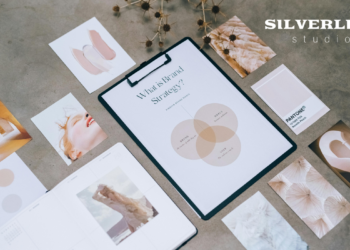When it comes to promoting your business at events, trade shows, or even within your own premises, a well-designed banner can make all the difference. It’s often the first point of visual contact that potential customers will have with your brand, so making it count is crucial. Here are five design tips and tricks to ensure your business banner stands out and effectively communicates your message.
1. Prioritise Your Branding
Your banner stands should immediately reflect your brand identity. This means using your business’s colour scheme, logo, and any other branding elements consistently. When people see your banner, they should be able to instantly recognise your brand.
Consistency is key; if your business has a specific font or style that’s used on your website or other marketing materials, make sure it’s mirrored in your banner design. A strong, cohesive brand presence helps build trust and makes your business more memorable.
2. Keep It Simple and Focused
Less is often more when it comes to banner design. Your banner needs to grab attention and communicate your message quickly—most people won’t spend more than a few seconds looking at it. Focus on one main message or call to action. Whether you’re promoting a sale, launching a new product, or simply raising brand awareness, keep the content clear and to the point.
Avoid cluttering your banner with too much text or too many images; instead, let the visuals speak for themselves and support the key message.
3. Use High-Quality Images and Graphics
Blurry or pixelated images can make your business look unprofessional. Always use high-resolution images that look sharp and clear, even when enlarged on a large banner. If your budget allows, consider investing in professional photography or graphic design services to create custom visuals that truly represent your brand.
Additionally, ensure that any graphics or icons used align with your overall brand style and add value to the message you’re trying to convey.
4. Choose the Right Colours
Colour choice is critical in banner design. Colours can evoke emotions and influence perceptions, so selecting the right palette is essential. Bright, bold colours can attract attention but should be used sparingly to avoid overwhelming the viewer. Conversely, more muted tones might suit a professional or sophisticated brand better.
Ensure that the text colour contrasts well with the background to maintain readability from a distance. If your banner is meant for an outdoor setting, consider how the colours will appear in natural light, as some hues may look different outdoors compared to indoors.
5. Include a Clear Call to Action (CTA)
A strong banner doesn’t just inform—it encourages action. Including a clear and compelling call to action (CTA) is essential for turning interest into engagement. Whether you want people to visit your website, sign up for a newsletter, or visit your booth at a trade show, your CTA should be prominent and easy to follow.
Use action-oriented language like “Discover More,” “Visit Us Today,” or “Sign Up Now” to prompt immediate responses. Pair this with a short, easy-to-remember URL or a QR code for direct access to more information.
By guiding your audience on what to do next, your banner becomes not just a visual tool, but a functional part of your marketing strategy.
Final Notes
Creating a successful business banner is about more than just throwing a few elements together; it requires careful planning and a clear understanding of your brand and audience. By prioritising branding, keeping the design simple, using high-quality images, choosing the right colours, and considering the placement and stand, you can create a banner that not only attracts attention but also effectively communicates your message.
Whether at a trade show, in your shop, or at a business event, a well-designed banner can be a powerful tool in your marketing arsenal. So take the time to get it right, and your investment will pay off with increased visibility and brand recognition.
David Prior
David Prior is the editor of Today News, responsible for the overall editorial strategy. He is an NCTJ-qualified journalist with over 20 years’ experience, and is also editor of the award-winning hyperlocal news title Altrincham Today. His LinkedIn profile is here.











































































